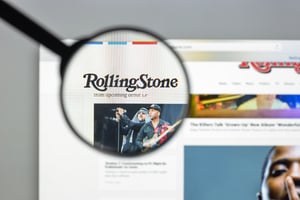For any salesperson, it’s important to understand why your customers keep coming back:
- Is it because you’re a better deal than your competitors?
- Is it the simplicity of your product offering?
- Is your product suite so specialized, there is no equal?
- Is it too complicated to uninstall your offering?
- Does your customer simply respect their relationship with you, and your product continues to deliver value for their organization?
 You could keep these kinds of questions going almost endlessly. And more than likely, the answer is a combination of a few factors. But the last question introduces a critical element: is what you provide for your customer financially impactful? In other words, does it deliver value? Beyond all the bells and whistles you may be able to offer, it is the value you offer, along with the extent to which it can be measured, that will keep you around and fuel customer loyalty for your business.
You could keep these kinds of questions going almost endlessly. And more than likely, the answer is a combination of a few factors. But the last question introduces a critical element: is what you provide for your customer financially impactful? In other words, does it deliver value? Beyond all the bells and whistles you may be able to offer, it is the value you offer, along with the extent to which it can be measured, that will keep you around and fuel customer loyalty for your business.
Most equate customer loyalty with B2C, and there’s a lot to be gained from analyzing what works – and doesn’t work – in B2C to help grow and strengthen your B2B business and customer base.
In thinking about customer loyalty in B2C, let’s look at the magazine subscription business. For decades, this business has depended on product consistency, timely content and, for many, a price that matched the value they felt they were getting from being a regular reader. Publications didn't really stray from their core content path into standard B2C practices like multi-layered loyalty programs, exhaustive email marketing, gimmicky flash sales, etc. – they just needed to keep delivering what got you interested in the first place: compelling articles at the right price.
But what makes a customer say, “It’s been a great run but I’m moving on”? To rattle and uproot a loyal subscriber, it’s typically more than just cost that sends them packing. In order to destabilize a long-standing customer, the change(s) issued has to severely impact how the customer accesses and consumes the content. But coupled with a rise in cost, the result is often a cancelled subscription.
As a 20-year subscriber of Rolling Stone (trivia note: it's named after “Rollin’ Stone,” the 1950 song by Muddy Waters – not after the rock band that’s been tirelessly touring since the 60s), I have received in excess of 500 issues over a two decade span. But a recent batch of cascading changes brought my subscription status – and customer loyalty – to the edge.
Companies that run strong loyalty programs understand the importance of engaging customers so they feel like they are part of the conversation, helping to guide how the company grows and develops over time. But when dedicated customers experience sudden change, and feel like they’ve been left out of the discussion, it's not unusual to see them line up and head for the exits.
So what did Rolling Stone do that was so bad? For starters, the magazine is now nearly double the cost for newsstand customers, ballooning from $5.99 to $9.99. And for subscribers like myself, the cost went from $34.95/year, which included 24 issues and a few bonus issues, to $89.95/year for 12 issues of what is now a giant-sized, heavy-stock magazine – almost twice the size of the old format – that barely fits in the mailbox. I had no choice; I had to call them. There was a lot to be annoyed about – the oversized style (that no longer fits in my computer travel bag), the steep price increase, the clumsy product rollout, and the overall messaging (or lack thereof).
I called them up and they politely apologized, explaining that the email with the price increase update was inaccurate (was it though, or is it “wrong” just because I called?) and then offered $79.95 for 24 issues. In cutting the price by more than half, my rage was quickly reduced and I was back in for two more years. But let’s face it, not communicating massive changes to your product and price is like playing Russian roulette with your customer base – loading up the chamber with your most ardent supporters and hope that they’re saved by Customer Service's discount safety net. The reality is that not everyone is going to call Customer Service – they’ll just cancel, and that’s the misstep Rolling Stone made in not properly communicating to their loyalists where they were headed (even if that was into uncharted waters to "jump the shark").
How do you keep your customers happy? The most successful sellers make a point of maintaining a steady dialogue with their customers and routinely asking questions about what could help them drive more value for their business. Not all customer requests will be possible and many will simply get documented. What’s important – the continued conversation and active customer engagement which builds customer loyalty, one conversation at a time.
Want to continue reading insights on customer loyalty and customer experience? Download our recent CX article below.

.jpg)
